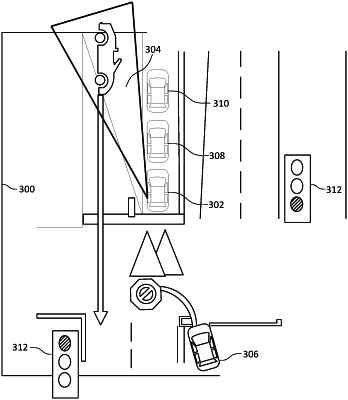| CPC B60Q 1/525 (2013.01) [B60Q 5/006 (2013.01); B60W 30/0956 (2013.01); B60W 40/04 (2013.01); H04W 4/46 (2018.02); B60W 2554/4041 (2020.02); B60W 2554/80 (2020.02); B60W 2556/45 (2020.02)] | 20 Claims |

|
1. A computer-implemented method comprising:
receiving, by an electronic control unit (ECU) in an intermediary vehicle, a first traffic-related data associated with a first object and a second traffic-related data associated with a second object, wherein the first and second objects are within a line of sight of the intermediary vehicle, but not within the line of sight of each other;
based in part on the first and second traffic-related data, determining, by the ECU, a probability that the first and second objects will collide with each other; and
based on the probability of collision, providing, by the ECU, a signal to at least one of the first and second objects.
|